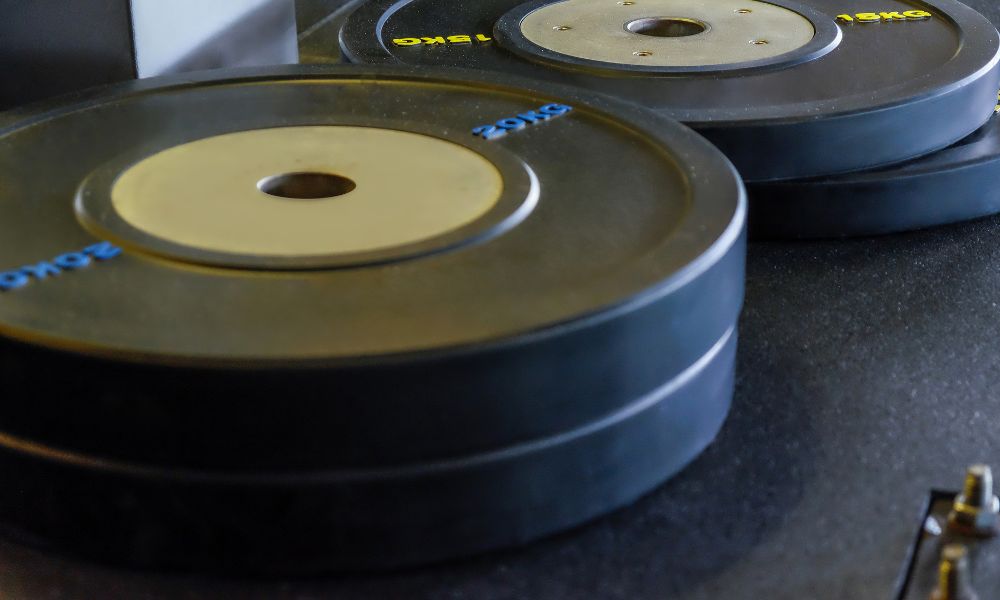In the dynamic world of weightlifting, bumper plates emerge as an essential and versatile tool, bringing a unique set of benefits to athletes, fitness enthusiasts, and those dedicated to enhancing their strength and power. Recognized by their distinctive design and construction, bumper plates are more than just weights – they represent a commitment to safety, functionality, and the pursuit of lifting excellence. Let’s delve into the features, benefits, and reasons why bumper plates are a game-changer in the realm of weightlifting bumper plates.
Weight plates are the unsung heroes of strength training. They may not get as much attention as dumbbells or barbells, but they play a vital role in building and developing functional strength. With their versatility and ability to be used in various exercises, weight plates offer an incredible range of options for anyone looking to challenge their muscles.
What sets weight plates apart from other types of weights is the freedom they provide in terms of load adjustment. By simply adding or removing plates from a barbell or machine, individuals can easily adjust the intensity of their workouts to suit their needs and goals. This adaptability makes weight plates an essential tool for both beginners and advanced lifters alike.
Furthermore, weight plate exercises engage multiple muscles simultaneously due to their inherent instability. Unlike using machines that stabilize movements, lifting free weights requires more stabilizing muscles to be activated throughout the exercise. This means that when using weight plates, not only are individual muscles being targeted but also the body’s natural balance and coordination mechanisms are being challenged.
1. Safety First: Protecting Floors and Equipment
Bumper plates are crafted with a rubberized outer layer, providing a protective barrier that minimizes damage to floors and equipment. Unlike traditional iron plates, bumper plates are designed to be dropped, making them an ideal choice for dynamic and explosive lifts like Olympic weightlifting movements. This safety feature not only preserves the longevity of your equipment but also ensures a secure training environment.
2. Versatility in Training: From Deadlifts to Olympic Lifts
Bumper plates offer a level of versatility that extends beyond traditional weightlifting. Their standardized dimensions and rubber construction make them compatible with a variety of exercises, from deadlifts and squats to dynamic Olympic lifts like snatches and clean and jerks. This versatility allows athletes to diversify their training routines and target different muscle groups with a single set of plates.
3. Olympic Lifting: Ideal for Dynamic Movements
Bumper plates have become synonymous with Olympic weightlifting, where dynamic and explosive movements are central. The ability to drop the weights safely after a lift is crucial in these scenarios. The rubber composition of bumper plates absorbs the impact, reducing the risk of damage to the plates, bars, and the training environment. This makes them the preferred choice for those honing their skills in the art of Olympic lifting.
4. User-Friendly: Easy Identification and Handling
Bumper plates are often color-coded based on their weight, providing a visual cue for easy identification. This user-friendly feature streamlines the loading process, especially in fast-paced workout environments. Additionally, the rubber construction makes bumper plates easier to handle compared to their iron counterparts, contributing to a smoother and more efficient training experience.
5. Suitable for Home Gyms: Minimizing Noise and Disturbance
For those with home gyms, noise and disturbance can be concerns. Bumper plates address this issue by minimizing the impact noise when dropped, creating a more conducive environment for home workouts. This is particularly beneficial for individuals living in shared spaces or seeking a more discreet training experience without compromising on intensity.
Selecting the Right Bumper Plates for Your Needs
1. Assess the Material and Durability
Bumper plates are typically made from rubber, and the quality of the rubber can vary. Consider high-quality rubber plates for better durability. Additionally, check if the plates have a steel core for added strength and longevity.
2. Verify Weight Calibration and Color Coding
Ensure that the bumper plates are accurately calibrated to their stated weight. The color-coding system is a helpful visual aid, especially in a busy gym setting. Verify that the plates adhere to standard color codes for easy identification.
Conclusion: Experience the Difference with Bumper Plates
In conclusion, bumper plates transcend traditional weightlifting by introducing safety, versatility, and user-friendly features. Whether you’re pursuing Olympic weightlifting or seeking a reliable solution for your home gym, bumper plates stand as a testament to a commitment to excellence in lifting. Elevate your weightlifting experience with the durability, safety, and versatility that bumper plates bring to your training sessions.





